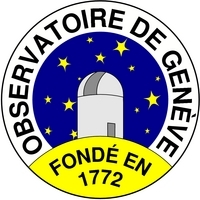
| INTEGRALPlanckGaiaPOLARCHEOPSEuclidATHENA |
| HEAVENSFACTCTALOFTSPICAJEM-EUSOXIPEeXTPTheseus |
| XRISMMAGBOUNDSMARTNet |
| ISDCCDCI |
| INTEGRAL Science Data Centre |
| Press Release 2004-03-18 |
| INTEGRAL Solves the Milky-Way Gamma-Ray Emission Mystery |
ESA's Integral gamma-ray observatory has resolved the diffuse glow of gamma rays in the centre of our Galaxy and has shown that most of it is produced by a hundred individual sources. Integral's high sensitivity and pointing precision have allowed it to detect these celestial objects where all other telescopes, for most than thirty years, had seen nothing but a mysterious, blurry fog of gamma rays ...
During the spring and autumn of 2003, Integral observed the central regions of our Galaxy, collecting some of the perpetual glow of diffuse low-energy gamma rays that bathe the entire Galaxy.
These gamma rays were first discovered in the mid-1970s by high-flying balloon-borne experiments. Astronomers refer to them as the 'soft' Galactic gamma-ray background, with energies similar to those used in medical X-ray equipment.
Initially, astronomers believed that the glow was caused by interactions involving the atoms of the gas that pervades the Galaxy. Whilst this theory could explain the diffuse nature of the emission, since the gas is ubiquitous, it failed to match the observed power of the gamma rays. The gamma rays produced by the proposed mechanisms would be much weaker than those observed. The mystery has remained unanswered for decades.
Now Integral's superb gamma-ray telescope IBIS, built for ESA by an international consortium led by Principal Investigator Pietro Ubertini (IAS/CNR, Rome, Italy), has seen clearly that, instead of a fog produced by the interstellar medium, most of the gamma-rays are coming from individual celestial objects. In the view of previous, less sensitive instruments, these objects appeared to merge together.
In a paper published today in "Nature", Francois Lebrun (CEA Saclay, Gif sur Yvette, France) and his collaborators report the discovery of 91 gamma-ray sources towards the direction of the Galactic centre. Lebrun's team includes Ubertini and seventeen other European scientists with long-standing experience in high-energy astrophysics. Much to the team's surprise, almost half of these sources do not fall in any class of known gamma-ray objects. They probably represent a new population of gamma-ray emitters.

The central regions of our Galaxy, the Mikly Way, as seen by INTEGRAL in
gamma-rays. With its superior ability to see faint details, Integral correctly
reveals the individual sources that comprised the foggy, gamma-ray background
seen by previous observatories. The brightest 91 objects seen in this image
were classified by Integral as individual sources, while the others appear too
faint to be properly characterised at this stage.
Credit: ESA, F. Lebrun (CEA-Saclay)
The first clues about a new class of gamma-ray objects came last October, when Integral discovered an intriguing gamma-ray source, known as IGRJ16318-4848. The data from Integral and ESA's other high-energy observatory XMM-Newton suggested that this object is a binary system, probably including a black hole or neutron star, embedded in a thick cocoon of cold gas and dust. When gas from the companion star is accelerated and swallowed by the black hole, energy is released at all wavelengths, mostly in the gamma rays.
However, Lebrun is cautious to draw premature conclusions about the sources detected in the Galactic centre. Other interpretations are also possible that do not involve black holes. For instance, these objects could be the remains of exploded stars that are being energised by rapidly rotating celestial 'powerhouses', known as pulsars.
Observations with another Integral instrument (SPI, the Spectrometer on Integral) could provide Lebrun and his team with more information on the nature of these sources. SPI measures the energy of incoming gamma rays with extraordinary accuracy and allows scientist to gain a better understanding of the physical mechanisms that generate them.
However, regardless of the precise nature of these gamma-ray sources, Integral's observations have convincingly shown that the energy output from these new objects accounts for almost ninety per cent of the soft gamma-ray background coming from the centre of the Galaxy. This result raises the tantalising possibility that objects of this type hide everywhere in the Galaxy, not just in its centre.
Again, Lebrun is cautious, saying, "It is tempting to think that we can simply extrapolate our results to the entire Galaxy. However, we have only looked towards its centre and that is a peculiar place compared to the rest."
Next on Integral's list of things to do is to extend this work to the rest of the Galaxy. Christoph Winkler, ESA's Integral Project Scientist, says, "We now have to work on the whole disc region of the Galaxy. This will be a tough and long job for Integral. But at the end, the reward will be an exhaustive inventory of the most energetic celestial objects in the Galaxy."
Note to editors
The paper explaining these results will appear on the 18 March 2004 issue of "Nature". The author list includes F. Lebrun, R. Terrier, A. Bazzano, G. Belanger, A. Bird, L. Bouchet, A. Dean, M. Del Santo, A. Goldwurm, N. Lund, H. Morand, A. Parmar, J. Paul, J.-P. Roques, V. Schoenfelder, A. Strong, P. Ubertini, R. Walter and C. Winkler.For more information, see also:
- ESA's Press release
- Nature's highlight
- Le communiqué de presse de l'Université de Genève
- ESA's Press release on the related INTEGRAL and XMM-Newton discovery of IGR J16318-4848
Contact persons:
Roland Walter INTEGRAL Science Data Centre Versoix, Switzerland Tel: +41 22 950 91 28 E-mail contact Francois Lebrun CEA-Saclay, Service d'Astrophysique Gif sur Yvette, France Tel: +33 1 6908.3569 E-mail contact









